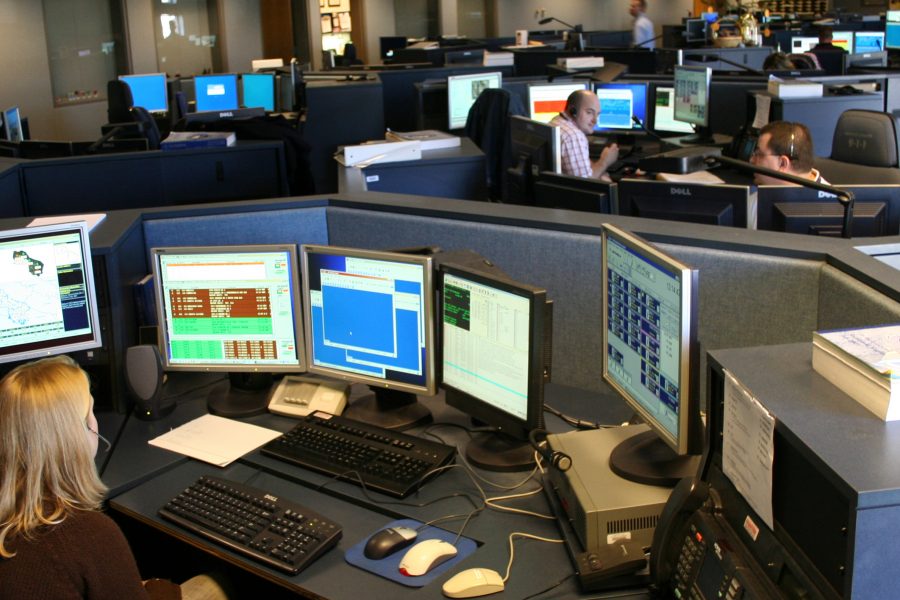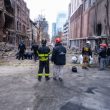School of hard knocks: 911 operations in the COVID-19 era
Boxer and pop philosopher Mike Tyson once opined that “everyone has a plan—until they get punched in the mouth.” Without question, the COVID-19 pandemic has punched the public-safety/emergency-response community squarely in the mouth—and hard. But the community’s resiliency and creativity is enabling it to fight back equally hard, and the lessons being learned through the experience will better prepare public-safety and emergency-response agencies for the future.
This observation is based on a webinar recently presented by Mission Critical Partners that I moderated—listen to it on-demand here. (Full disclosure—MCP employs me as a content specialist, which it has for the last six years, after a decade-long stint as editor of IWCE’s Urgent Communications) The webinar panel featured the following public-safety leaders:
- Scott Brillman, 911 director, City of Baltimore
- Jim Lake, director, Charleston County (S.C.) Consolidated Dispatch Center
- Tyrell Morris, executive director, Orleans Parish (La.) Communications District
- Chuck Spalding, Next Generation 911 director, Palm Beach County (Fla.)
- Christy Williams, director, North Central Texas 911 (NCT911)
During the webinar, the panelists discussed how this crisis is different from other types of major incidents they’ve encountered, what they’re experiencing, how they’re coping and, perhaps most important, what they are learning that will prepare them better should they encounter something like this again—perhaps in the fall, if a second wave of the coronavirus emerges.
What’s different
Emergency-response officials are used to planning for major incidents with significant short-, medium- and long-term impacts, e.g., tornados, hurricanes, wildfires, earthquakes, hazardous-materials spills and emissions, and terrorist attacks. But the coronavirus pandemic is on a level all by itself, in terms of its impact on operations, technology and staffing.
“We can’t see this, we can’t smell it, we can’t feel it, and there’s a lot of unknowns … this is like nothing we’ve ever seen,” Brillman said.
Lake agreed. “With a hurricane, you see it coming, it happens and then there’s a long recovery period, [with the period length] depending on the impact. … With this crisis, we’re not quite sure when the start date was, and what the end date will be, and the constantly changing environment—it just makes it that unknown that we haven’t experienced before.”
According to NCT911’s Williams, this pandemic is especially challenging because of the length of the event—seven weeks and counting—and the inability to predict when it will relent.
“This is really calling on us to persevere,” Williams said.
NCT911 is better positioned than most to do so, because it uniquely has a pandemic plan as part of its overarching continuity-of-operations plan (COOP), according to Williams.
“That has allowed us to be very proactive,” she said.
Spalding said he believes the nationwide reach of the pandemic is what makes it unique. Traditionally, large-scale events have local and/or regional impact. In the aftermath, teams arrive from other regions to assist with the response. That assistance largely isn’t available with this event, because the pandemic is gripping every state to some degree, he said.
“Now, we’re experiencing an event where everyone is in the same boat … that’s new for all of us,” Spalding said.
What they’re experiencing
Arguably, the biggest impacts with which these officials have been grappling are interrelated: how to keep staff members safe while ensuring that emergency calls are handled, and that response is dispatched.
The latter tasks have to be achieved even when the number of available telecommunicators has decreased because personnel are unable to work after contracting the virus and/or staff members are working remotely due to government-mandated shelter-in-place orders. Making matters worse is that 911 calls are surging in many places as a result of the pandemic.
“Our biggest staffing challenge has been with our smaller PSAPs [public-safety answering points],” Williams said. “We have a nine-person PSAP that had some folks test positively, and some others that are in isolation. … It doesn’t sound like much—four or five people out—but that’s 50% of their workforce.”
The logistics of dealing with this are daunting. PSAPs that decided to keep their brick-and-mortar facilities open needed to space personnel in such a way to comply with local social-distancing guidelines, while also sanitizing workspaces and other areas of the facility effectively. PSAPs deciding to have personnel work remotely had to ensure that they had the technology needed to process emergency calls and then dispatch the appropriate response.
As might be expected, a few hiccups have occurred. For example, PSAPs rerouting calls to neighboring agencies—or perhaps shifting operations entirely—have encountered interoperability issues caused by the proprietary nature of various communications systems.
“All of us have plans in place to move calls around to backup centers, additional PSAPs, etc., but the glaring problem here is CAD [computer-aided dispatch],” Spalding said. “The CAD systems are mostly all proprietary, [so] interoperability is an issue .… If we had the ability to do remote CAD, some kind of cloud-based CAD, it would tremendously help our efforts here to have functional remote workers.”
Williams added that similar issues exist with land-mobile-radio (LMR) systems.
“When we’re talking to our individual PSAPs about rerouting calls, another challenge is radio,” Williams said. “As we have two to six PSAPs in a county, when we talk about the possibility of consolidating down to one because they are lacking personnel, then we have severe challenges when it comes to radio.”
According to Lake, his center’s remote workers are relying on the commercial internet for connectivity, which is far less robust than the broadband capabilities of the brick-and-mortar 911 facility.
“In some cases, they need bigger pipes to actually manage not only the CAD data, but also the call data that’s going back and forth,” he said.
Fortunately for Orleans Parish, which encompasses the city of New Orleans, no such issues exist due to a major incident that occurred late last year, Morris said.
“The Hard Rock [hotel collapse] moved the whole city over to FirstNet,” Morris said. “But I would say that, if we had not done that, we may be in a different situation.”
However, Morris is dealing with staff-member concerns, which easily can morph into morale issues and even paranoia that can have a negative impact on operations.
“When you sit at a console for 12 hours, and you’re scrolling social media, you become experts in all the wrong things,” Morris said.
Lake and Brillman encountered similar scenarios.
“There’s a concern that the co-worker sitting next to them may be contagious but not even know it,” Lake said. “So, they’re concerned every time someone coughs or sneezes.”
“The number-one question that we received initially is, ‘Do I really have to go home to my family after I work here?’” Brillman said.
According to Brillman, another issue that needed to be addressed concerned the mentality that many PSAP personnel have—a mindset that, in normal circumstances, would be viewed as a positive.
“Usually in public safety, they’re ‘superheroes’—it doesn’t matter that you’re sick, you have to come to work,” Brillman said. “This is a different situation, so we had to change the mentality. We had to make sure that everyone knew that they were going to be OK, but do not come in if you’re sick.”
How they’re coping
A plethora of creative solutions are being implemented by these public-safety leaders to address the aforementioned issues. Some examples include:
Baltimore secured several hotels to house personnel.
Some hotel rooms are being used exclusively for those who have tested positive for COVID-19, others are being used for personnel whose COVID-19 tests are pending. Others are reserved for personnel who are afraid to go home and thus potentially expose their families or just need some sleep.
“It made the workforce feel a little more comfortable, knowing that they have a place to go, just in case,” Brillman said. Baltimore also established a nurse triage line—staffed by two fire-department paramedics who also are nurses—to handle low-acuity calls. “Most of them are COVID-related, and they’re able to give guidance on staying home or getting tested,” Brillman said.
Charleston County established a “director of positivity.”
The new position is expected to help with morale issues and ease some of the pressure that personnel are feeling during this long-drawn-out event.
“We’re working with a chaplaincy to do wellness messages, [and] we are getting messages from the chiefs, the sheriff and some of our elected officials,” Lake said. “With Telecommunicator Week … we had to postpone the celebration—because it would not be right for us to celebrate during this time—but we are doing some fun things just to ease some of the tension.”
Orleans Parish implemented a “video 911” capability.
This approach was used to triage COVID-19-related emergency calls more effectively during a time when staffing issues were a problem. Early on, 60% of New Orleans’ emergency medical services (EMS) staff were out, due to self-quarantine or exposure to COVID-19, which put a great strain on the resources available to send to emergency incidents, according to Morris.
Fortunately, a pandemic emergency medical dispatch protocol exists that has various response levels. After consulting with the county’s medical director, the COVID-19 event was raised to pandemic level one, which means that low-acuity calls—in which the patient had basic flu-like symptoms that were not life-threatening—get sent to a separate queue.
“A paramedic who is sitting in the center then initiates a video call … takes [the caller] through a more-thorough triage … and then makes a recommendation at the time, based upon CDC guidelines,” Morris said. “In most cases, that recommendation is to stay home, to indeed not go to the emergency room or to your doctor. So we’re able to avoid that unnecessary dispatch of an ambulance.”
Palm Beach County created “go bags” for remote 911
Working with an industry vendor, the county put together 50 “go bags,” each of which include a backpack, laptop computer, and related hardware and software needed by personnel to answer 911 and administrative calls in a remote location.
In addition, links to FirstNet’s network were established to ensure a secure broadband connection wherever they established operations.
“We’ve tested them, and they work well, even in an [automatic call distribution] environment,” Spalding said.
What they’ve learned
Each of these public-safety leaders expressed that much has been learned through this experience, with many of those lessons being centered on the continuity-of-operations plans (COOPs). Agencies that do not have them in place need to get to work, according to the speakers. And those that already have them need to adapt them in various ways.
“Our COOP doesn’t include our people, just technology,” Brillman said.
“We typically plan for all the normal … events, and this is something that we had not thought about, and certainly didn’t take into account the potential impact on everyone on the team, in terms of ability to answer calls and provide the same type of service we currently [offer] to the community,” Spalding said.
Morris suggested that the scope of COOPs needs to expand in other ways, as well.
“Our COOPs are going to come under a lot more scrutiny, and we’re going to have a heck of a lot more partners than we ever thought,” Morris said. “We used to plan how we coordinate with state government. We’re going to have to push that out a little further. How do we coordinate our plans with the federal government and, in some cases, international government? We have some states now that are seeking resources directly from foreign powers—that changes the game, as far as our entire emergency management system [is concerned].”
Williams stressed that COOPs are ever-evolving documents and should be treated as such.
“We are learning something new every single day,” Williams said. “I remember several years ago, when we created our plan with MCP, they told us that this would be a dynamic plan—and I don’t think I realized … how dynamic it would be until this incident. … Every day, as we discover new things, we are making changes on the fly.”
Glenn Bischoff can be emailed at [email protected].

















